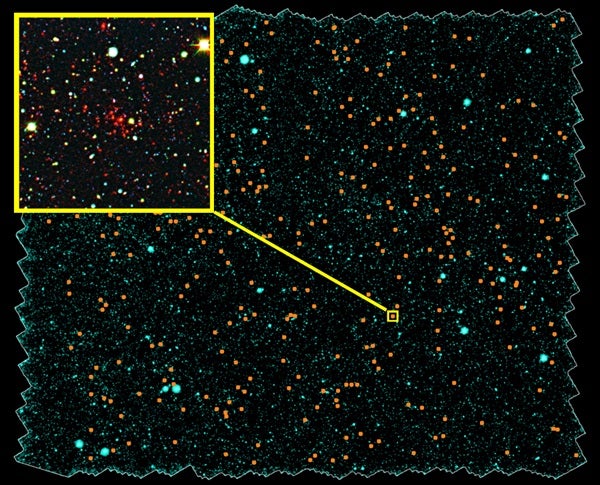A team of astronomers co-led by Mark Brodwin and Peter Eisenhardt, both of NASA’s Jet Propulsion Laboratory in Pasadena, California, has discovered almost 300 new galaxy clusters. Nearly 100 of these clusters are 8 billion light-years away or farther; they formed when the universe was less than half its present age. The discovery of nearly 100 distant galaxy clusters is a six-fold increase in the number of known galaxy clusters at these extreme distances.
The more distant the cluster, the younger it is, so these newfound galaxies are still in the early stages of formation. Clusters usually hold the most massive galaxies, which is where the earliest stars formed. By studying so many young clusters, astronomers can learn how the earliest stars formed and how clusters (and galaxies) evolved.
The team combined infrared data from NASA’s Spitzer Space Telescope and existing optical images from the National Optical Astronomy Observatory Deep Wide-field Survey collected at Kitt Peak National Observatory in Arizona. The astronomers used the optical data to weed out small, intervening galaxies. To find the clusters, they searched through Spitzer data for dense clumps of distant objects. Eisenhardt explains: “Distant galaxies show up best in infrared because during the billions of years it takes to reach us, their light expands along with the universe to long, infrared wavelengths.”
The team presented their findings June 5 at the American Astronomical Society’s meeting in Calgary, Canada.










